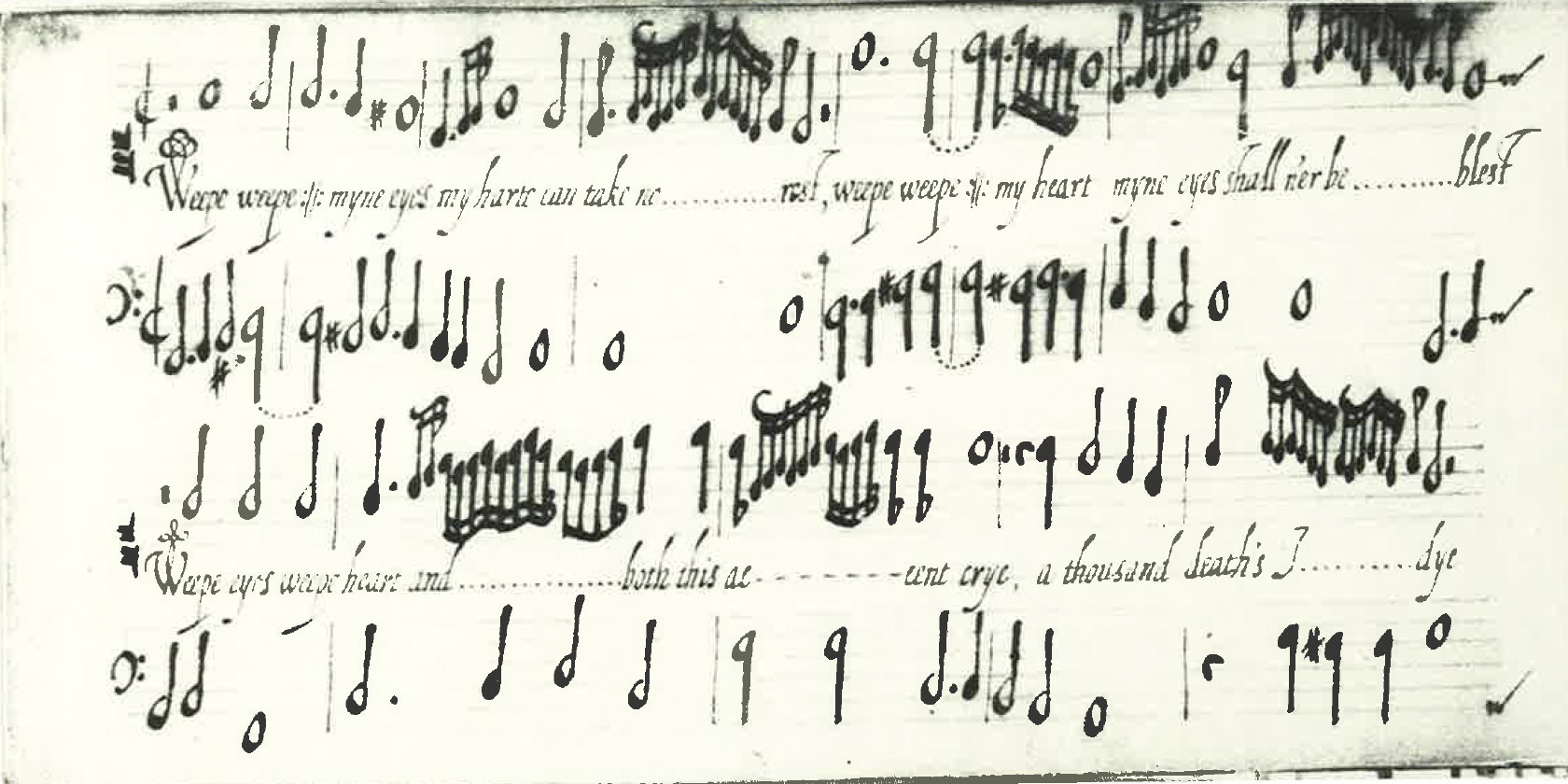Egerton MS 2971: A Source for Ornamented Versions of Early 17th Century Italian and English Songs
The British Library Egerton MS 2971 is a important source for embellished versions of early seventeenth-century Italian and English songs and pieces for lyra viol. It contains thirteen highly ornamented settings, some of which are unique, while others are known in simpler versions. Ornament signs are also present in the accompaniments to Italian songs notated in tablature and in the solo pieces for lyra viol at the end of the manuscript. Additionally, a table of "graces for ye viol" pasted into the final flyleaf provides insight into the performance practice of the time.
"A Musical Party" by Gerard van Honthorst (1592-1656). Between circa 1616 and circa 1618, Netherlands. Oil on canvas. National Gallery of Ireland.
This manuscript contains five Italian monodies that are highly ornamented, including two songs by Caccini that have considerably more divisions than the published versions. The manuscript demonstrates the influence of the Italian style of singing on English musicians of the early seventeenth century.
The settings of ⏵︎ “Dolcissimo sospiro” and ⏵︎ “Amarilli mia bella” in Egerton 2971, which are Caccini's own songs, exhibit precisely the kind of extravagant style of singing and divisions Caccini wished to avoid. However, the accompaniment, featuring closely spaced chords more typical of the viol than the lute, demonstrates a distinct English interpretation of the Italian style. Although the lute was commonly used to accompany solo voices, the lyra viol was also highly regarded for this purpose in England. The ornaments in both songs are freer in that their rhythmic values do not always fit correctly within a measure, and some ornaments are notated only by signs, in the vocal line or the accompaniment. The anonymous setting of ⏵︎ “Cruda Amarilli” by Guarini from Il Pastor Fido includes tablature for lyra viol and features the same style of ornamentation. A simpler version of the same song, with unfigured bass, is found in MS Tenbury 1018.
Ornamented version of Caccini's “Amarilli mia bella”, from British Library, MS Egerton 2971, ff. 28v.
The manuscript also includes around twenty English songs, and roughly half of them have divisions. However, the divisions in these English songs are notably different from those in the Italian settings. The divisions in the English songs tend to follow the original melodic outline and utilize quavers and semiquavers, with each piece of ornamentation being concise, as we can see in the ornamented setting of the anonymous carol ⏵︎ “Sweet was the song the virgin sung” (f.6v). A simpler version can be found in William Ballet's Lute-book. ⏵︎ “This merry pleasant spring” (f.16v) includes considerably more divisions than found in the Turpyn Book. One noteworthy feature of the manuscript is the two-part adaptation of Wilbye's five-part madrigal ⏵︎ “Weep mine eyes,” which is indicative of the trend towards the continuo song.
Ornamented two-part setting of John Wilbye’s five-part madrigal “Weep mine eyes”, from British Library, MS Egerton 2971, ff. 30v.
On the other hand, in the Italian song ⏵︎ O bella più che la stella, the divisions are longer and cover a wider range, with one division on 'pieta' consisting of twenty-two notes and spanning a tenth. The divisions in this song demonstrate that, at the time, the florid style of ornamentation was still closely associated with Italian song.
“O bella più” with divisions, from MS Egerton 2971, ff. 22v.
A simpler version can be found printed in Robert Dowland's “A Musicall Banquet” (1610).
In conclusion, Egerton MS 2971 is a valuable source for studying the performance practice of early 17th century English vocal and instrumental music. The manuscript contains ornate versions of both Italian and English songs, including unique pieces and more elaborate adaptations of known songs. Through the manuscript, we can see the influence of Italian singing style on English musicians and the emergence of the continuo song trend. Additionally, the manuscript provides insight into the use of viol graces and the use of tablature accompaniments. Overall, Egerton MS 2971 is a testament to the rich musical culture of the time and is an important resource for scholars and performers alike.
References:
Cyr, Mary. (1971). A Seventeenth-Century Source of Ornamentation for Voice and Viol: British Museum MS. Egerton 2971. Royal Musical Association Research Chronicle, 9(1), 53-72. DOI: 10.1080/14723808.1971.10540851
Huws Jones, E. (1987). The Performance of English Song: 1610-1670. Outstanding Dissertations in Music from British Universities. New York: Garland. Retrieved from https://www.proquest.com/scholarly-journals/performance-english-song-1610-1670-edward-huws/docview/1296781397/se-2
Jorgens, E. B. (Ed.). (1986-1989). English Song, 1600–1675: Facsimiles of Twenty‐six Manuscripts and an Edition of the Texts. (Vol. 1: British Library Manuscripts, Part I: Add. Ms. 15117; Egerton Ms. 2971; Add. Ms. 24665; Add. Ms. 29481, ff. 2–26v). New York: Garland Publishing, Inc.



